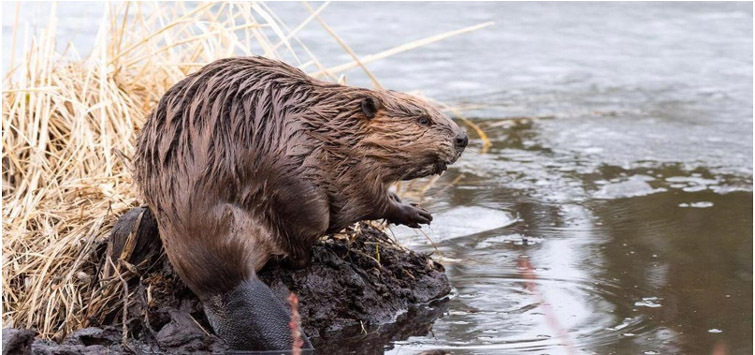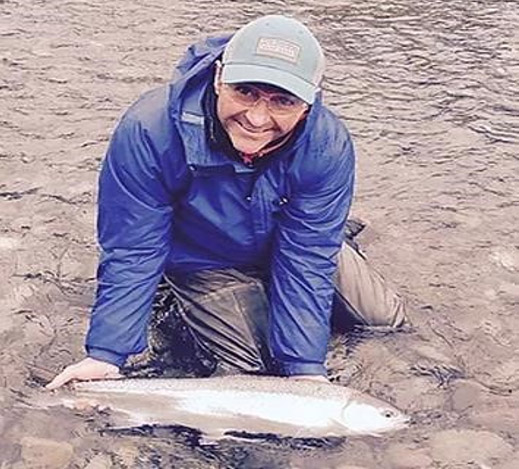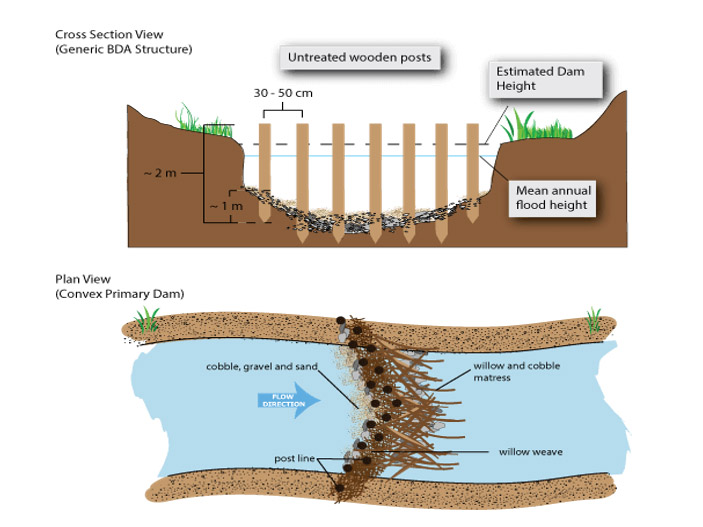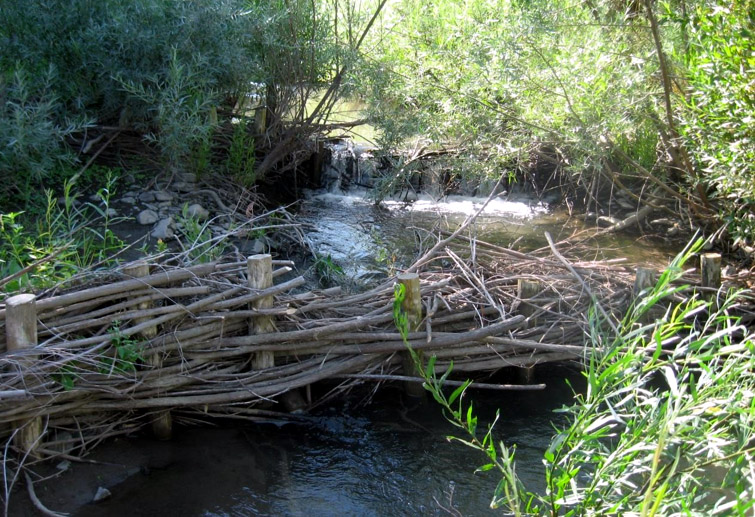|
“Beavers are the true heroes. What they do for stream restoration and ecosystem health is far more than our efforts. Beaver Dam Analogues (BDAs) and Post-Assisted Log Structures (PALs) are a temporary stop gap to help systems recovery, but healthy beaver populations are the ultimate goal when possible.” -
- Dr. Stephen Bennett, fish & wildlife biologist, Co-Founder Anabranch Solutions
Research that began in 2009, conducted by three aquatic scientists at Utah State
University created a model for riverscape solutions. That work inspired Dr.Stephen Bennett, a fish and wildlife biologist; aquatic ecologist, Dr. Nick Bouwes; and ecogeomorphologist Dr. Joe Wheaton to found Anabranch Solutions in 2015.
The low-tech process-based restoration mimics and promotes natural actions to restore self-sustaining processes. The result is improved riverscape health.
The Anabranch Team’s most important partner who works round the clock day in and day out for free is the Beaver

Beaver dams alter the delivery of water, sediment, and nutrients by slowing the flow of water in streams and rivers, giving the water places to infiltrate and create a mosaic of habitats that are important for birds, fish, and plant species. Recent research (Emily Fairfax, California State University) has also demonstrated beaver dams provide resiliency against the impacts of wildfires.
WTNY reached out to Dr. Stephen Bennett.
“Professors Joe Wheaton, Nick Bouwes, and I were studying the restoration of endangered species in the Bridge Creek Watershed, Oregon, Bennett told WT. “Billions of dollars were being spent on physical structures when we came in with our experiment, which turned out to be an inexpensive and workable solution.”
Biogenic features such as beaver dams, large wood, and live vegetation are essential to the maintenance of complex stream ecosystems, but these features are largely absent from models of how streams change over time.
Many streams have incised because of changing climate or land-use practices.
Most restoration efforts are focused on manipulating physical rather than ecological processes.
“We present an alternate view, that stream recovery is largely dependent on the interaction of biogenic structures with physical fluvial processes.”

Bridge Creek is listed as one of 11 Major Spawning Areas critical to the recovery of the Lower John Mid-Columbia steelhead population. Dr. Bennett shown here with a steelhead trout.
“Our first question was: If we do stream restoration, will we create more fish?” After introducing BDAs to help beaver populations expand, the average number of beaver dams increased from 40-160 active dams and the increased dams led to a more complex and healthy riverscape. And...the juvenile steelhead trout population increased by 175%.
Build It and They Will Come “Trees falling into a river, beavers creating log jams and pools, the buildup of sediment, this is all part of the natural process. Modern-day activities have not only removed the trees but brought the beaver close to extinction through trapping practices. “

BDAs are built with locally sourced materials like sticks, rocks and mud. The structures slow down and pool water, which helps reconnect streams with their historic flood plains; helps recharge subsurface water supplies; and helps provide moisture to riparian vegetation later in the summer when drought conditions occur.
“The combination of the BDAs and PALs allows the sediment to build up on the banks as much as 3 feet. This allowed the natural energy of the water to move to the flood plain at a slower rate after the snow melt.”
Bennett adds that it is a very simple process. “You could teach it to high school kids in an hour.”
However as simple as the process is Bennett cautions that it is absolutely imperative to have people trained in river science to be on the job. “We have trained about 3,000 people and continue our workshops and training.”
Since the initial model was developed, Bennett tells us hundreds of projects have successfully been completed. “There are limits though and that is why a trained river scientist needs to provide guidance. Logistics and planning are essential.”

Large man-made reservoirs tend to disrupt the natural environment the flow of nutrients, water, and biota. Beaver dams are naturally part of the system. The plants and animals have co-evolved with them, and they have provided these ecosystem services for millennia.
Photo Credit Nick Weber of Beaver Dam Analogue in Bridge Creek, Oregon. Bridge Creek is a tributary to the John Day River
Bennett highlights that there have also been some very interesting collaborations with ranchers.
“We had a rancher who called us in to help restore the creek running through his property. The creek had run dry, and yet he recalled in his youth that the water ran freely and there was vegetation for his cattle to graze.
“We implemented the BDAs and now the creek is flowing the way it did in the rancher’s youth. Even during the last three years of drought.”
Now, sponsored by the NRCS-led Sage Grouse Initiative, the ranch has become a model for restoring streams on private agricultural lands.
Going With the Flow
“There’s plenty of hard work ahead of us,” Bennett says. Our forward vision is to build these structures throughout an entire watershed.”
Looking to the Bear River, the largest tributary flows through southeastern Wyoming, southeastern Idaho, and northern Utah, Bennett says “It’s 500 miles and will involve working with government and other agencies. It’s quite complicated getting everyone together to think about the whole watershed not their own little piece of property.”
“It’s all about letting the river do the work with Beaver’s help.”
.
| 






